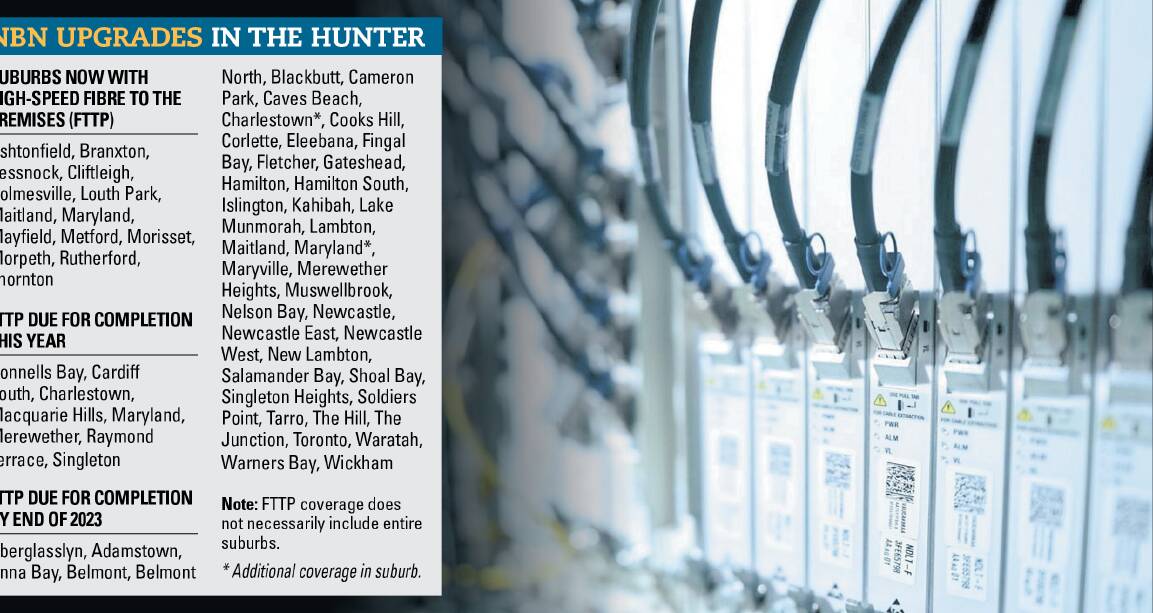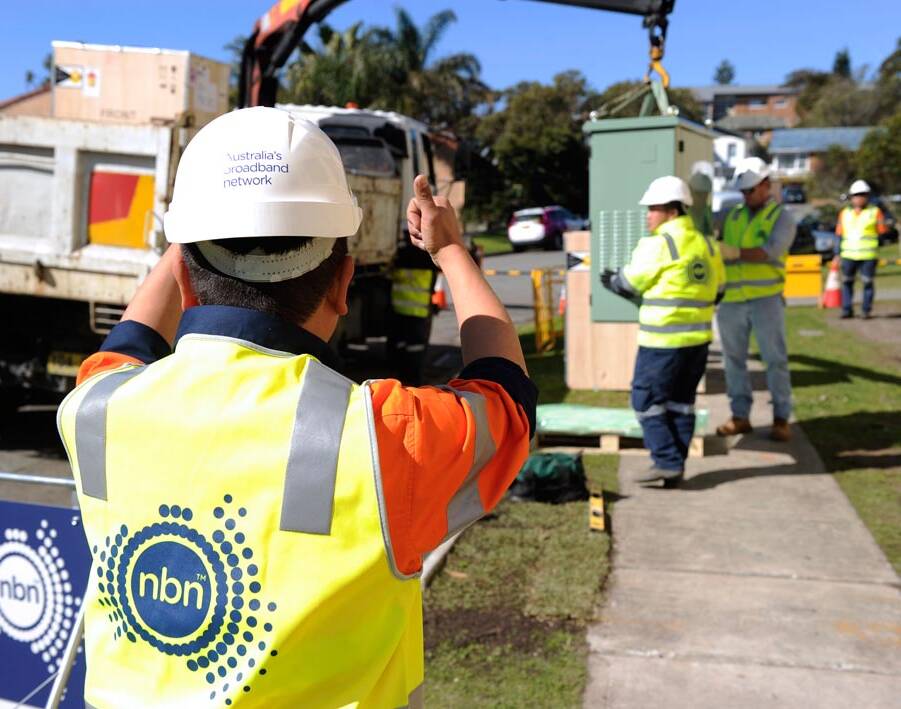
More than 60 Hunter suburbs are among the areas confirmed for world-class internet speeds over the next year as NBN Co rolls out upgraded fibre connections across Australia.
The National Broadband Network company said last week that Aberglasslyn, Eleebana, Hamilton South, Lake Munmorah, Lambton, Waratah and more parts of Cooks Hill and Corlette were among 160 new suburbs joining the list of areas to receive fibre-to-the-premises (FTTP) upgrades.
Fourteen Hunter suburbs, Ashtonfield, Branxton, Cessnock, Cliftleigh, Holmesville, Louth Park, Maitland, Maryland, Mayfield, Metford, Morisset, Morpeth, Rutherford and Thornton, have access to FTTP.
Upgrades in another eight areas, Bonnells Bay, Cardiff South, Charlestown, Macquarie Hills, Merewether, Raymond Terrace, Singleton and more of Maryland, are due to be finished by the end of the year.
NBN Co has announced 31 other Hunter suburbs in its fibre upgrade program since October 2020.

The announcements mean about 61 suburbs across the region should be eligible for FTTP by the end of 2023.
The federal government announced last week that it would spend $2.4 billion on upgrades to another 1.5 million homes and businesses across Australia by the end of 2025, bringing the total number of upgrades to about 3.5 million.
NBN Co has not announced which Hunter suburbs will be included in this latest tranche of rollouts.
The government hopes to have 90 per cent of Australian houses eligible for connection via FTTP within three years.
FTTP replaces the fibre-to-the-node (FTTN) technology used in much of the initial NBN rollout.
FTTN relies on inferior copper wires running into houses from "nodes" on the footpath.
The upgrades deliver internet speeds up to one gigabyte per second, which is substantially faster than most homes need and on par with the fastest internet connections in the world.
NBN Co offers service providers three internet speeds via FTTP: 100 megabits, 250 megabits and 1000 megabits per second.
One hundred megabits per second is generally considered ample for most households, though some with multiple 4K televisions and online gaming players could benefit from faster speeds.
To upgrade, home owners in eligible areas must contact an internet service provider to request installation of the fibre and home connection points.
NBN Co says the faster connections are usually available within 12 to 18 months of a suburb being announced on its upgrade list.
The company is trialling solutions for installing FTTP to apartment blocks and hopes to start rolling out these installations in the middle of next year.
It says about 50,000 premises a month are becoming eligible for FTTP connections and it is on target to reach 550,000 by the end of the year and up to two million by the end of 2023.
The upgrades are generally in outer suburbs and regional areas.
NBN Co is also spending $750 million upgrading its 5G fixed wireless internet service to rural and regional areas with little or no access to fibre technology.
Suburbs with high-speed fibre to the premises (FTTP)
Ashtonfield, Branxton, Cessnock, Cliftleigh, Holmesville, Louth Park, Maitland, Maryland, Mayfield, Metford, Morisset, Morpeth, Rutherford, Thornton
FTTP due for completion this year
Bonnells Bay, Cardiff South, Charlestown, Macquarie Hills, Maryland, Merewether, Raymond Terrace, Singleton
FTTP due for completion by end of 2023
Aberglasslyn, Adamstown, Anna Bay, Belmont, Belmont North, Blackbutt, Cameron Park, Caves Beach, Charlestown*, Cooks Hill, Corlette, Eleebana, Fingal Bay, Fletcher, Gateshead, Hamilton, Hamilton South, Islington, Kahibah, Lake Munmorah, Lambton, Maitland, Maryland*, Maryville, Merewether Heights, Muswellbrook, Nelson Bay, Newcastle, Newcastle East, Newcastle West, New Lambton, Salamander Bay, Shoal Bay, Singleton Heights, Soldiers Point, Tarro, The Hill, The Junction, Toronto, Waratah, Warners Bay, Wickham
Note: FTTP coverage does not necessarily include entire suburbs.
* Additional coverage in suburb.
CORRECTION: An earlier version of this story referred to internet speeds in megabytes per second rather than megabits.







